Alix Hawley's Blog, page 10
March 9, 2016
Coming Soon to a City Near You?
Very happy that All True is a finalist for the BC Book Prizes. What a great list for the Ethel Wilson Fiction Award--and I've long admired British Columbia author Ethel Wilson's writing (1954's Swamp Angel is pretty great--girl with a gun, for one thing). April 30th is announcement day, but before then, some of the finalists will be touring BC giving talks and readings. I grew up in BC but haven't been far beyond the Lower Mainland and Okanagan, so I hope to see more of the place in the next month. Unlike Dan, I don't do so well sleeping in lean-tos, however. Anyway, reading dates will be posted here.
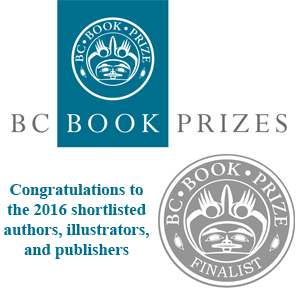
Published on March 09, 2016 18:48
March 3, 2016
Dan With a Pearl Earring
The great Tracy Chevalier offers her five favourite frontier novels on Goodreads this month. All True makes the list! I'm honoured to be in the company of Laura Ingalls Wilder (my inner child is screeching for joy) and Cormac McCarthy (present self screeching too). It's also lovely to see what Tracy says about my book here:
"I am so glad this novel will be published in the U.S. later in 2016, as it gets inside the mind of one of America's most enduring pioneer folk heroes and strips him bare. Early pioneer Daniel Boone is mostly known for his coonskin cap, but in Hawley's version he is a peculiar man with a habit of leaving his family to go hunting and taking years to return. Hawley writes about Boone's relationship with Native Americans and with the harsh landscape he survives in a manner both dreamlike and enthralling."
OK, we know Dan hated coonskin caps, but we're not sure exactly how he looked. I wish there were more than one portrait done of him in his lifetime. Tracy deftly handles the nature of art and portraits in her book, Girl With a Pearl Earring. Here's our only visual of Dan, in which he's an old man, next to Vermeer's equally mysterious Girl.

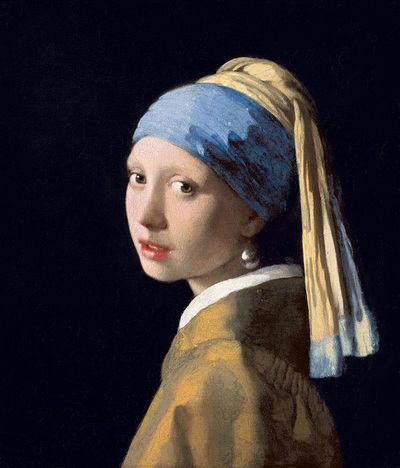
"I am so glad this novel will be published in the U.S. later in 2016, as it gets inside the mind of one of America's most enduring pioneer folk heroes and strips him bare. Early pioneer Daniel Boone is mostly known for his coonskin cap, but in Hawley's version he is a peculiar man with a habit of leaving his family to go hunting and taking years to return. Hawley writes about Boone's relationship with Native Americans and with the harsh landscape he survives in a manner both dreamlike and enthralling."
OK, we know Dan hated coonskin caps, but we're not sure exactly how he looked. I wish there were more than one portrait done of him in his lifetime. Tracy deftly handles the nature of art and portraits in her book, Girl With a Pearl Earring. Here's our only visual of Dan, in which he's an old man, next to Vermeer's equally mysterious Girl.


Published on March 03, 2016 16:51
February 29, 2016
April in Vancouver
I'm very happy to be reading with two rather charming fellows on April 7: Michael Christie and Andrew F. Sullivan. If you're in Vancouver that night, please join us. We will not disappoint. 

Published on February 29, 2016 13:14
January 22, 2016
Storybrain: Seven Questions for Michael V. Smith
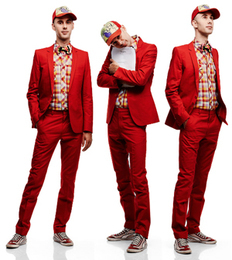 Michael V. Smith by rights should have reporters outside his door daily (see his answer to question seven below). He is fully himself, shameless in the best way, thoughtful and delightful to talk with. He's the author of several books, including the novels Progress (2011) and Cumberland (2002), which was nominated for the Amazon.ca First Novel Award. He's also a poet, filmmaker, reviewer, beloved performer, buster of gender norms, and, as he puts it, "occasional clown." I'm so glad to have gotten to know Michael in person over the last few months, as I've liked his work since reading his Journey Prize-nominated story "What We Wanted" years ago. It's about a young queer boy who feels responsible for a horrible accident. Michael's new memoir, My Body is Yours, also gets under the skin of a boy, this time himself, as he grows up, and once he's a man trying to come to terms with compulsion and pain, his own gayness and his father's last illness. It's a hell of a read, intense and insightful and redemptive. I admire writers who can pull off memoir without flinching or self-pity or sinking into what Twain called "dollar-book Freud," and there's none of that here. I admire this book tremendously, and I'd hope to create a first-person voice for my fictional Dan that's as strong as this one. Here's what Michael said about his writing process.
Michael V. Smith by rights should have reporters outside his door daily (see his answer to question seven below). He is fully himself, shameless in the best way, thoughtful and delightful to talk with. He's the author of several books, including the novels Progress (2011) and Cumberland (2002), which was nominated for the Amazon.ca First Novel Award. He's also a poet, filmmaker, reviewer, beloved performer, buster of gender norms, and, as he puts it, "occasional clown." I'm so glad to have gotten to know Michael in person over the last few months, as I've liked his work since reading his Journey Prize-nominated story "What We Wanted" years ago. It's about a young queer boy who feels responsible for a horrible accident. Michael's new memoir, My Body is Yours, also gets under the skin of a boy, this time himself, as he grows up, and once he's a man trying to come to terms with compulsion and pain, his own gayness and his father's last illness. It's a hell of a read, intense and insightful and redemptive. I admire writers who can pull off memoir without flinching or self-pity or sinking into what Twain called "dollar-book Freud," and there's none of that here. I admire this book tremendously, and I'd hope to create a first-person voice for my fictional Dan that's as strong as this one. Here's what Michael said about his writing process.1. Did you have any alternate titles for the book? What made you pick My Body is Yours?
We’d started with a bunch of titles in mind, and nearly went with “Your Heart is Hungry Too,” but that just sounded too cheesy and obvious. I wanted something with more complexity. And, really, my father was dead by then, and he’s a big part of the book, so that title didn’t suggest anything about him. My Body Is Yours was the title of a retrospective film screening I had in Berlin in 2011. It featured a bunch of my short films, in which I mostly used my body as a tool for discussing larger issues of gender, addiction, and sexuality, obviously. That title worked for this book—it’s a little pervy, it’s overly intimate—but it also speaks about my father, and the notion of his biological legacy. I wanted something that could address multiple topics. There’s a complex conversation happening in the memoir, so we wanted a title that could match it.
2. How did you decide on the structure for this book--a set of connecting pieces about your life?
The book really grew out of an essay I wrote for a great Arsenal Pulp Press anthology, Persistence: All Ways Butch and Femme. Brian Lam approached me at the launch and suggested we could do a nonfiction book together. That essay, “A Failed Man,” was the core of this book. We agreed that I’d write a book about gender and masculinity, but I’d pitched something with a stronger cultural bent. I wasn’t writing a memoir—I was making a cultural critique, a set of essays on how I saw masculinity manifest in the world I knew. But like all books, this one had its own story, its own trajectory, and it became my job to listen to it, and to follow. So the structure of the memoir really determined itself.
3. In spite of being episodic, the book has a clear shape. Did you know from the start how you were going to finish? Did the ending remain the same through different drafts?
I put the book together in pieces. I used a few more essays I’d previously written, and expanded them greatly. I wrote a bunch of new things, I read a lot of books, and the personal story won out over and over again. The intimate stuff was simply more compelling. I couldn’t get the same depth of insight or care in the general as I could in the specifics of my own experience. And by the end of the writing process, the story about my father’s decline and the climax of my addiction declared itself loud and clear. With the end of a manuscript, you figure out what you were writing about all along. And the shape of the book, then, settles.
4. Could you choose a piece of music to go with this book?
Now nobody has asked me that question before. I’ll pick the album Crane Wars, by Beans*, a defunct Vancouver band who did a lot of great things, like concerts with visuals that made a sort of live filmic experience. They were orchestral in scope, like Godspeed You Black Emperor. Brilliant, fun, engaging, and deeply intimate works. My memoir aspires to the breadth and beauty of that band.
5. The book talks about creating your performing alter ego, Cookie, and about welding your other self to that one. In writing, especially the very honest and revealing sections about your life and mind, did you find you had to take on that performing persona? Can you talk about that?
I don’t think the book was taking on a persona. I know that narrators are a construction—I teach my students that all the time, that we pick and choose, and in those choices cobble a narrator together—but this narrator wasn’t about adopting a persona. Rather, it was made with listening. Listening better. I felt like I was finding a truer voice than the one I use in day-to-day life, because I could release a clear-eyed, candid me. The me that would have a conversation with myself. You can say things in books you might never have permission to say in the real world—whether that’s a permission others do or don’t give you, or a permission you refuse to give yourself. The job I gave myself for My Body Is Yours was to listen well to that personal confession and insight, to listen to the uncomfortable stuff, to ask that place of discomfort some hard questions, and to feel safe enough to hear the answers. The writer then had to put those answers in some context. I translated those responses as best I could for a reading public. So the narrative project wasn’t to adopt a persona like Cookie, who gave me so much permission in public to say the naughty thing, to be playful and dangerous and truthful, but to find a deeper sense of self, and give voice to that. To approach another side of this question, though, I’d add that what Cookie and this narrator share, I think, is a bravado that comes from conviction.
6. This book is about constructing (and deconstructing) yourself as a man, but also about how your father constructed himself. I'm interested in your view of the layers here--a writer building a picture of another person, one who was quite closed off in some ways. Did you find this hard?
The book is a kind of apology to my father, I guess. It’s trying to make space in the world so that people like my father—who suffer greatly for being failed men, men who are expected to live up to a standard they can’t meet—might find the world more forgiving. It’s a compassionate book. Compassion for my dad and compassion for me. I wrote the book to have a conversation about the massive gap I experienced between my life as a man and the cultural fabric of masculinity—what I felt and what was expected of me. The gap between what my father felt he had permission to do and what I wanted for him. And from him. Much of my life has been influenced by knowing my dad as a counter-example. My understanding of his story was devised more by what he couldn’t do or say as by what he did. The silences in my father’s life had patterns, they made a legacy. Those silences told a story I’d listened to for years.
7. One of my favourite parts is the section in which you describe sex with a lesbian. You say, "We were still very queer . . . but . . . in that moment, I wanted to share myself with her authentically. I wanted her to see me." The whole book lets us see you. I'm always interested in asking memoir writers how they do that--how do you reconcile that wish to be seen with the human desire for privacy? Do you ever wish you had kept some of the story back, or did writing it transform it into something separate?
I don’t have much of a wish for privacy. Maybe I would if there were reporters outside my door. So much of my early life was about hiding. As a kid, I hid my interest in boys, hid my tenderness, my parents’ fights, our poverty, my father’s drinking, my softness and vulnerability. I even hid my vocabulary, which put people off. Then as a teen I hid my orientation, and my body because it was too skinny. I hid my acne. I hid my facial hair and the fact that I shaved. I hid my body hair. I hid my boyfriend for nearly two years, at great expense and pains. So I don’t have much cause for hiding now that I’m an adult, and more secure in myself. Our vulnerabilities can make us loveable, and human, and safe. We don’t learn much by secreting ourselves away. Those silences only protect us when we’re deeply threatened. But I’m in a much better place in the world than I was as a kid, or as a teen. So I’m safe, and I can share, and I can make space for others to do the same. That’s how we learn best, by sharing. We’ve always progressed via generosity, via communication, via vulnerability. Those are the foundations of my writing.
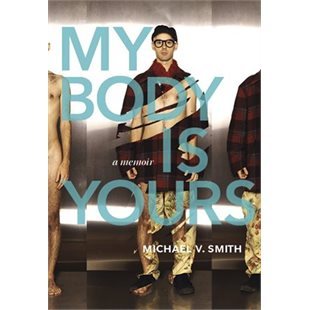
Published on January 22, 2016 16:34
A Helluva Town
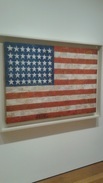 I went to New York this week--Dan never got there, I'm pretty sure, but it was lovely to be in his home country anyway. I met my US editor at Ecco / HarperCollins, Dan Halpern. We're very excited about bringing All True out in America this August. Just a few spellings to Americanize from the first edition . . ..
I went to New York this week--Dan never got there, I'm pretty sure, but it was lovely to be in his home country anyway. I met my US editor at Ecco / HarperCollins, Dan Halpern. We're very excited about bringing All True out in America this August. Just a few spellings to Americanize from the first edition . . ..
No Boone portraits in the Met, MOMA, or the Frick, and sadly for me and other 18th-Century geeks the Folk Art Museum was closed to set up a new exhibit, but I had a brilliant time looking around. Twitter's #museumselfie day coincided with my visit, so I did my level best with Laurie Simmons, the Temple of Dendur, and Edward Hopper (I've talked about this painting in classes on magic realism so many times!). And that's a Jasper Johns to the left.
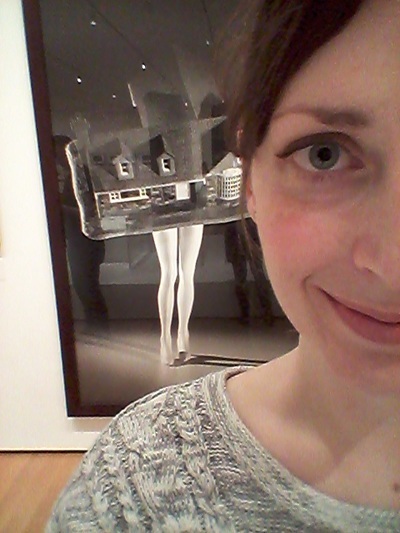
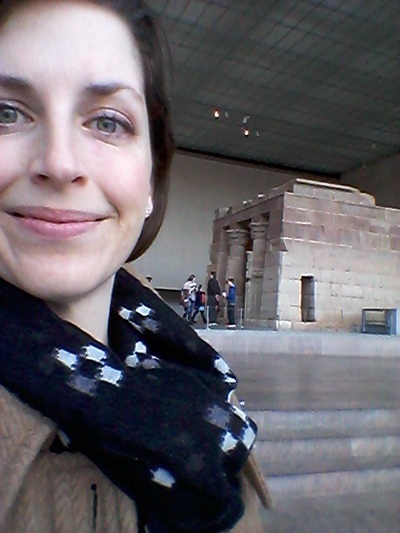
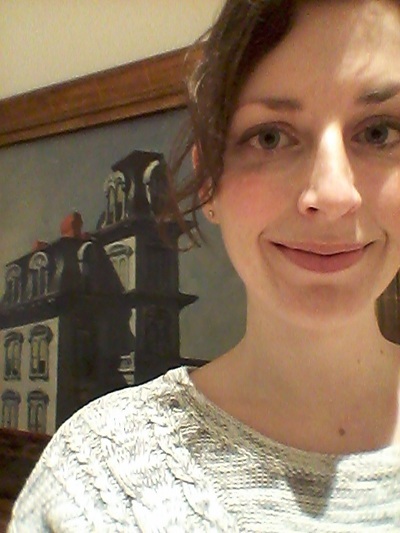
Published on January 22, 2016 09:05
January 15, 2016
Storybrain: Seven Questions for John Lent
 John Lent is one of those people with presence beyond the physical. When he was teaching at Okanagan University College, he usually had students trailing gosling-like after him, and his classrooms were noisy and inviting. When he plays and sings with the Lent Fraser Wall trio, he takes up the stage. When he gives a reading, his low voice and big laugh wrap the room (you'll hear it in his answers below!). People are drawn to his generous light, which is blazingly present in his books.
John Lent is one of those people with presence beyond the physical. When he was teaching at Okanagan University College, he usually had students trailing gosling-like after him, and his classrooms were noisy and inviting. When he plays and sings with the Lent Fraser Wall trio, he takes up the stage. When he gives a reading, his low voice and big laugh wrap the room (you'll hear it in his answers below!). People are drawn to his generous light, which is blazingly present in his books. John writes unusually open criticism, poetry, and fiction. He is one of the most welcoming writers I can think of--his writing gives, reaches out, beckons us to understand. His connected autobiographical stories, So It Won't Go Away, were shortlisted for the Ethel Wilson Prize. I remember sitting with him at Davison Orchards in Vernon when he was working on his most recent fiction, The Path to Ardroe (2012). We were talking about structure and the bones of narrative, which he's a master at disrupting and putting together again differently. He was wrestling with how to connect his four main characters' stories. He found many ways to do it, as he told me about recently when we spoke again about what turned out to be a brilliantly intricate book about time, journeys, cycles, family, friendship. The National Post said, "The Path to Ardroe more closely resembles a symphony, with a number of different movements circling around a central theme."
1. Did you have any alternative titles for this book? What made you pick THE PATH TO ARDROE? Did that come to you fully formed at the start, or later?
I’m a real title guy. I love titles, and, usually, I’m pretty good with them. But this big novel really defeated me, over and over again. The first title, so pretentious, was QUADRATURE. [Fellow critic and professor] Craig McLuckie straightened me out on that one very quickly. "Dreadful and tweedy," I think he said. But it was the working title and I know why I had reached for it in all my pathetic small enthusiasms: I was reading too much Umberto Eco and I liked the architectural image of the four panels…because it reflected the structure of the novel I was writing. Ah well. The next title for it was ONE MOON’S LIGHT because I thought it unified the four sections and the four characters through landscape. But it sounded too cute in the end, like a fluffy, fake realist Cher movie. Then for a few years I called it THE PIVOT. Again, I was looking for a word that indicated how the structure of the novel works, like a Russian doll, the sections pivoting, one against the next. But it was too cold. Finally, I gave up. I reached for THE PATH TO ARDROE because I knew in my bones that it was the hike I’d taken to Ardroe in northern Scotland that caused the fictional material of this novel to surface…so there it was…a reasonable journey or quest image with an exotic name. Consummatum est.
2. How did you start this novel?
I started writing this novel in Scotland, in Edinburgh, in the fall of 1994. It was published in 2012. So I had it for a long, long time. I was on a sabbatical, under a time restraint, so I wrote this novel more deliberately than anything else I’ve ever written. What I mean by that is that I decided to run four characters, one against the next, in a plot sequence that intrigued me. Each character would have two 50 page sections. Each of their stories would be suspended at the end of the first 50 pages, and resolved in the second 50 pages. The characters all knew one another in certain ways, but their stories were disconnected except for the important fact that they were happening on the same days. What excited me especially at the outset was the sequencing: if their characters were named A, B, C and D, then the sequence was as follows: Part One: A, B, C, D/Part Two: D,C, B, A. What fascinated me about this sequencing was the Russian doll effect, and the way the stories enclosed one another. As you can see, because I had
divided it up so deliberately, I could schedule the writing very tightly. One month per section; eight months flat out. Perfect. I returned from Scotland with a complete first draft.
3. How did you find the sense of an ending---did you know when to finish? Did the ending remain the same through different drafts?
It’s funny because I wouldn’t approach the ending to a similar novel now as I did back then. But one of my intensities as a writer in 1994 was that I had become bored and in some ways offended by too much irony and high-style in literary narrative. I was wary of irony and too much poise. I suspected insecurity in them. I knew the risks of another kind of boldness and I was willing to take that risk, especially toward the magic realist or some of the more metaphysical possibilities in meta-fiction. I had been working through writers like Joyce, Celine, Lowry, Vonnegut, Laurence…especially writers who experimented with stream of consciousness techniques… for a long, long time. I’m saying all this in order to provide just a bit of context for my answer to your question. The ending to THE PATH TO ARDROE is hopelessly and, I hope, wonderfully lost in an impossible metaphysical dream full of magic and coincidence…like the end of Shakespeare’s late comedies, especially THE TEMPEST. Nothing in it is possible;
everything in it is possible. Do you know what I mean? There is even the redemption of a child the character Peter never knew about. I wanted the whole, big, bloated, romantic machine to almost explode with hope and love and shameless humanity…no irony, no sniveling, no easy, safe exits.
4. You’re a musician, and music fills your work. Could you choose a piece of music to go with this book?
Oh my goodness. My life is so full of music. But my love and appreciation for music is very intuitive. I do not inhabit my world of music with the kind of knowledge I inhabit my literary world with. All I’m trying to say is that I will be all over the place in my answer. As far as literary narrative is concerned, I love spatial rather than temporal structures. That means I am drawn to a circuitry in fiction that is held by a sequence that runs on juxtaposition of panels. So I am obsessed by things that are like small symphonies or jazz suites in music: any musical structure that is doing what I think I am trying to do with landscape and character in fiction. Here are five pieces that might have inspired or accompanied a novel like THE PATH TO ARDROE: Glenn Gould’s GOLDBERG VARIATIONS (the one in which he mumbles over the music); Miles Davis’ SKETCHES OF SPAIN; Gustav Mahler’s Fifth Symphony; Pat Methany and Charlie Haden’s BEYOND THE MISSOURI SKY (SHORT STORIES); Randy Newman’s GOOD OLD BOYS.
5. ARDROE is built in sections that centre on different members of a group of old friends (we’ve seen some of them before in earlier books). I’m interested in how this became a novel instead of a set of short stories, and how you decided on this form.
In THE PATH TO ARDROE I was fascinated by the prospect of me moving away from autobiographical fiction in both short and long fiction and towards the almost daring freedom of plotting and invention. There are a lot of constraints in the genre of autobiographical fiction and I had written within those constraints for some time. So it was almost comical for me to invent freely, to plot out these characters and what might happen to them, especially the two women characters. The Oyama panel is the most autobiographical fiction panel in this novel. You can see those constraints there. There is a more static quality to those two panels. But the other three are, for me, almost wildly fictional. And I had a lot of fun reaching for that kind of fiction. I had done a lot of work on the short story form…I had more confidence there, but I wanted to write a novel. The solution was to write a novel that was built upon four novellas that fit together as one, even larger music. That was what I was trying for anyway. That’s what
it felt like. I had witnessed Joyce doing it in ULYSSES, Faulkner in THE SOUND AND THE FURY and AS I LAY DYING; Lowry in UNDER THE VOLCANO; Sheila Watson in THE DOUBLE HOOK. It was a form I had studied carefully.
6. Your characters are distinct individuals, but read as facets of a single person in some ways. I’m interested in your thoughts on that.
Well, I may have already hinted at an answer to that. I have four panels that I hope ARE distinct. But from the point of view of the whole thing, my hope was to create a meta-fiction within which these four revolving and distinct wheels told a larger, more singular story, a more impossible story that draws all the other stories within itself and is humming and rolling in an imperfect, straining desire to be told. And which can only be told in this rather sideways way.
7. Homecoming is a thread that runs through the book. Can you talk about this?
Yikes. I can just hear myself blathering on now in a carefully woven web of lies…this is such a great question, Alix. Fundamentally, thinking of literary thinkers like Northrop Frye, Joseph Campbell or Erich Auerbach, I see "homecoming" as this foundational element to so many "stories." The return of the "hero.’" All those beautiful motifs in all their variance. And another way of imagining homecoming is to see it in terms of landscape: a return to the "ground." Each of these four characters in THE PATH TO ARDROE has to "come back to earth." Return to their "ground." Whatever it might be. That is where redemption is. It might be as simple and as magical as the texture of the physical world that is right before us, including, maybe especially, our physical body. Things we deem as secondary all the time when they are in fact the real "grail," always primary, the "home" of a kind of sacredness in us, a dignity in each of us, something that cannot be taken away from us easily. Do you know what I mean? In that sense, in each of the character’s "quests," there is the homecoming to the body and the ground the body is nourished by. If there is a vision beneath this particular novel, that’s what it was. I remember writing in my notebook when I started writing this novel in Edinburgh: "Don’t forget that consciousness IS landscape. Don’t forget that." And that IS the homecoming I think, for each of these characters.
Published on January 15, 2016 14:44
December 22, 2015
Year-End Lists
It was very nice to be included on the Globe and Mail's and National Post's Best Books of 2015 lists, as per previous posts. It's also lovely to have All True pop up on some other recent lists. Barda Book Talk named it one of the year's top historical novels, Mosaic Books in Kelowna has put it on its Best Books EVER list (!), and Real Style, startlingly, added me to its list of Five Emerging Writers to Watch For (I'm in pyjamas at the moment).
Scroll back through the blog for some other writers to watch for--this year I've had a good time talking with people like Kevin Hardcastle (Debris), Andrew F. Sullivan (new book, Waste, out in March), Ayelet Tsabari (The Best Place on Earth), Danila Botha (Too Much on the Inside), Sean Johnston (We Don't Listen To Them), Adam Lewis Schroeder (All-Day Breakfast), Chelsea Rooney (Pedal), Emma Hooper (Etta & Otto & Russell & James), Guillaume Morissette (New Tab), and Corinna Chong (Belinda's Rings), among others. More coming.
Scroll back through the blog for some other writers to watch for--this year I've had a good time talking with people like Kevin Hardcastle (Debris), Andrew F. Sullivan (new book, Waste, out in March), Ayelet Tsabari (The Best Place on Earth), Danila Botha (Too Much on the Inside), Sean Johnston (We Don't Listen To Them), Adam Lewis Schroeder (All-Day Breakfast), Chelsea Rooney (Pedal), Emma Hooper (Etta & Otto & Russell & James), Guillaume Morissette (New Tab), and Corinna Chong (Belinda's Rings), among others. More coming.
Published on December 22, 2015 14:14
December 4, 2015
Breaking Out the Bottles
 On the heels of yesterday's post, I'm also delighted to hear that All True is one of The Globe and Mail's 100 Best Books of 2015. I feel lucky to be among writers like Wab Kinew, Heather O'Neill, Patrick DeWitt, Anakana Schofield, and even Madame Kim Kardashian (I'm thinking I need a more glamorous author photo). Here's the editorial comment:
On the heels of yesterday's post, I'm also delighted to hear that All True is one of The Globe and Mail's 100 Best Books of 2015. I feel lucky to be among writers like Wab Kinew, Heather O'Neill, Patrick DeWitt, Anakana Schofield, and even Madame Kim Kardashian (I'm thinking I need a more glamorous author photo). Here's the editorial comment:"This fictional portrait of legendary American explorer Daniel Boone was a deserving winner of this year’s Amazon.ca First Novel Award. Yes, she published a short story collection in 2008, but with All True, Hawley truly arrived."
So much good reading this year. On that note, Storybrain will be back soon--I've been busy drafting--with more authors you might like.
Published on December 04, 2015 13:28
December 3, 2015
20 is My Jersey Number
I'm so happy All True has just cracked the top twenty of The National Post's NP99 Best Books of 2015 list. (And that's the terrific Anakana Schofield in the image below--get reading her Martin John (#3) if you haven't already).
Here's what the editors said:
"Hawley’s daring and stylish re-imagining of the legend of Daniel Boone marks this debut writer—and winner of the Amazon.ca First Novel Award—as a definite up-and-comer in Canadian literature."
Early Christmas present for me. Now back to the sequel draft.
Here's what the editors said:
"Hawley’s daring and stylish re-imagining of the legend of Daniel Boone marks this debut writer—and winner of the Amazon.ca First Novel Award—as a definite up-and-comer in Canadian literature."
Early Christmas present for me. Now back to the sequel draft.

Published on December 03, 2015 09:13
#20
I'm so happy that All True has just cracked the top twenty of The National Post's NP99 Best Books of 2015 list! (And that's the terrific Anakana Schofield in the image below--get reading her Martin John (#3) if you haven't already).
Here's what the editors said:
"Hawley’s daring and stylish re-imagining of the legend of Daniel Boone marks this debut writer—and winner of the Amazon.ca First Novel Award—as a definite up-and-comer in Canadian literature."
Early Christmas present for me. Now back to the sequel draft.
Here's what the editors said:
"Hawley’s daring and stylish re-imagining of the legend of Daniel Boone marks this debut writer—and winner of the Amazon.ca First Novel Award—as a definite up-and-comer in Canadian literature."
Early Christmas present for me. Now back to the sequel draft.

Published on December 03, 2015 09:13



